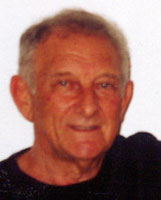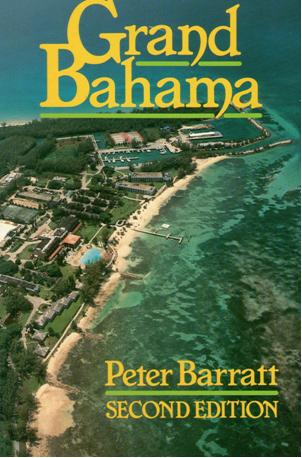From:TheBahamasWeekly.com
The Remarkable Billy Butlin
By Peter Barratt
Mar 14, 2014 - 12:00:23 PM
 Perhaps the most remarkable development ever conceived and built in the Family Islands of the Bahamas was Sir Billy Butlin’s project at West End. For the venture Butlin chose the (almost) nearest point of the Bahamas to the Florida mainland on Grand Bahama. Viewed in retrospect, the audacity of the concept, considering the straightened financial times of Britain and the Bahamas just after World War II, perhaps even surpassed the daring of Wallace Groves’ Freeport project.
Perhaps the most remarkable development ever conceived and built in the Family Islands of the Bahamas was Sir Billy Butlin’s project at West End. For the venture Butlin chose the (almost) nearest point of the Bahamas to the Florida mainland on Grand Bahama. Viewed in retrospect, the audacity of the concept, considering the straightened financial times of Britain and the Bahamas just after World War II, perhaps even surpassed the daring of Wallace Groves’ Freeport project.
The problems of distance from ‘home base’ were compounded by the dearth of building materials and labour on the island and the totally unknown American tourist market. Yet in 1948 Butlin started work on a large hotel complex and holiday village at the western end of the island. Besides lack of building materials and labour, he even had to solve the problem of creating infra-structure, advertising the project in the US and then transporting materials and later visitors to a totally undeveloped island.
Butlin bought up a large tract of land at the western tip of the island in 1948 and proceeded to build 'Butlin's Vacation Village', with a view to providing complete vacations for middle-income families at a very moderate room rate. He formed a public company incorporated in the Bahamas and was supported by several large British companies. Shares to the extent of some £2 million (something like $20 million at that time) were issued. The Reema Construction Company from England acted as general contractors for the work and ground was broken in 1949. Work went ahead and expatriate construction staff moved in, necessitating the building of temporary accommodation, called the 'European Quarters' some half a mile from the main project. (Some of the buildings were still standing as late as the 1980’s, illustrating the truism that there are few things more permanent than temporary buildings).
But due to the dock strike in Britain, which lasted for over three months, materials and supplies were held up, seriously impeding the progress of the work. This affected considerable numbers of expatriate staff and a large number of Bahamians workers many from other islands who lived in a labour camp that was built to house some 800 people. Anticipating that the idea would appeal to thousands of Americans, Butlin planned to build several large chalets, an airstrip, a golf course, power plant, conference halls, a dock, swimming pools and shops. In fact the project was to become a self-contained 'holiday camp' after the English model. As there were no scheduled airlines and the airstrip was not completed, most of the staff and workers came in by boat or by chartered seaplane. Transportation to and from the island was a major problem, although given time to promote the hotel further the transportation facilities could have been provided in due course.
Eventually after many long delays and setbacks the holiday village was opened on 15th February 1950, even though the construction work was not complete. The plans called for 500 rooms accommodating 1,000 people, but only half that amount could be accommodated when the doors opened. The cost of a week's vacation was a moderate $99 and for a time the hotel was full. In July 1950 Butlin told the Miami News that he expected to have the entire holiday village finished in time for the winter season. However, mainly due to the inflated cost of construction, the project was not paying its way and it had a number of jittery creditors. In autumn 1950 some of them came over to West End and 'posted' the area and had it closed down. The ‘holiday village’ had only been open some ten months. The bulk of the staff were repatriated and only five caretakers and a small labour force of fifty men were left to maintain the property. Eventually the whole project was put under the hammer by the Supreme Court and was sold to one of the largest creditors in England. The creditors formed Grand Bahama Properties Ltd to administer the assets that were shortly thereafter taken under option by a group out of Chicago. A final date was agreed upon for this group to take up their option but it did not materialise, for at about the same time a front-page article appeared in the New York Herald Tribune stating that the group was supposedly connected with 'Murder Incorporated' -- a sinister US gang of professional murderers! It was also rumoured that they intended to introduce a gambling operation on Grand Bahama. The reputation of the group was soon common knowledge and reaction was immediate -- no more was ever heard of the Chicago syndicate.
The original company of Butlins (Bahamas) Ltd had an option to purchase some 20,000 acres of Crown Land as an incentive for them to develop the holiday village. In order to keep the option open the hotel was re-opened around 1955 after extensive alterations and repairs had been made. Grand Bahama Properties ran the hotel as a high-class fishing resort. But, being primarily interested in the real estate business, they let it be known that the hotel was for sale. There was speculation, particularly in London, that the Bay Street oligarchy of Nassau had been less than helpful in the matter of supporting Butlin's venture. There was a chance in 1955 that if a full gambling licence had been issued to a reputable organisation it might have helped put the hotel on its feet, but the idea was thoroughly quashed by the press in Nassau. Certainly the transportation to and from the hotel was a major unsolved problem, then the dock strike in England and the devaluation of sterling at this time were serious setbacks. Another often repeated reason for the failure of the project was that the holiday camp idea was unpopular with Americans although there seems to be little evidence of this. Certainly the 'Americanisation' of the venture would have been a simple enough task. On the evidence at hand one may conclude that it was essentially the right development in the right place--but it was at least ten years too soon.
The hotel was put up for sale in 1959 and the property was being sought by some American hoteliers. There were two prospective customers. Holiday Inns of America had sent in an architect to study plans for the renovation of the hotel but they preferred only to lease the property; however, another group wanted to purchase and shortly afterwards negotiations were concluded and Charles A. Sammons a Dallas financier and principal stockholder of the Jack Tar Hotel chain, acquired the property. The facilities were further renovated and extended. In a matter of months from the time of take-over, literally tons of building materials, furnishings and equipment were ferried from the mainland by means of landing craft, freighters and planes. The Jack Tar Company, cognisant of the transportation problem that had bedeviled Butlin, also acquired a small passenger liner, the MV Grand Bahama, to ferry passengers to and from the United States.
The 416 room seaside Grand Bahama Hotel at West End in its heyday was completely self-contained and offered visitors the greatest variety of tourist facilities in The Bahamas and possibly the entire Caribbean region. But though it successfully weathered many vicissitudes the hotel finally closed its doors in April 1990 and, despite many rumours of imminent take-overs, it remained closed. Then in 1997, almost unannounced, work started on a 2,200-acre site nearby. West End Resort Ltd had commenced demolition of the existing hotel and started work on a first phase 155 acre tract that was named Old Bahama Bay. It was reported the new venture would invest in excess of $20 million to create a 47-room cottage-style resort with 92 residential lots fronting newly dredged waterways. Mindful of the fact that West End is almost exactly opposite to Palm Beach, Florida and is one of the nearest points of The Bahamas to the American mainland they also started work to refurbish the 150-berth marina. Their future plans called for the construction of a 500 room five star hotel for the property but this was superseded by the entry of another developer to West End. Their idea was overtaken by their neighbours, the Ginn Corporation, who proposed to create a mega-resort literally on the other side of the boundary line. The Ginn group purchased Old Bahama Bay but their mega-project stalled, due in part, to the worldwide recession in the first decade of the twentieth century.
© Peter Barratt
This article is taken in part from the second edition, published in 1989, of the book ‘Grand Bahama’ by Peter Barratt

Aerial view of the West End resort in the 1980’s
|
© Copyright 2014 by thebahamasweekly.com -